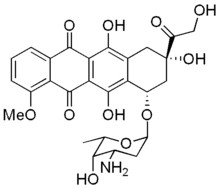PURPOSE: Advanced thymomas (stage III with great vessel involvement and Stage IV) are not usually manageable by surgical resection and radiotherapy, and effectiveness of multimodality therapy including chemotherapy has been recently reported. However, the optimal treatment strategy has not been determined. We reviewed our experience with a multidisciplinary approach and evaluated the chemotherapy in the treatment of invasive thymoma.
METHODS: Seventeen patients were treated with multimodality therapy consisted of chemotherapy, surgery, and/or radiotherapy. Four patients had stage III disease with superior vena cava invasion, 9 had stage IVa disease, and 4 had stage IVb disease. The chemotherapy regimen consisted of cisplatin (20 mg/m2/day on days 1-4), doxorubicin (40 mg/m2 on day 1), and methylprednisolone (1,000 mg/day on days 1-4 and 500 mg/day on days 5, 6) (CAMP). Chemotherapy was administered in a neoadjuvant setting to the 14 patients and in an adjuvant setting to the remaining 3patients with stage IVa disease. Surgical resection was intended in all patients. After those treatments, chemotherapy and/or radiation therapy were performed.
RESULTS: All but one of the 14 patients with induction chemotherapy had responded to the CAMP therapy, and the response rate (CR: 1, PR: 13) was 92.8%. One patient with MG, PRCA, and hypogammaglobulinemia died during the chemotherapy. Eight patients of them had a CR after surgical resection and chemoradiotherapy. All three patients treated with surgical resection followed by chemotherapy with or without radiotherapy achieved also a CR. Recurrences occurred in 6 patients, but 4 of them are now alive after re-treatment. The 10-year survival of all the patients was 80.7%, and 11 patients with a complete remission after the multidisciplinary treatment are all alive 9 to 193 months after initiation of the therapy.
CONCLUSION: The CAMP therapy was highly effective to invasive thymomas. The multidisciplinary treatment containing this chemotherapy is considered a justifiable treatment strategy for patients with advanced thymoma.
CLINICAL IMPLICATIONS: The high efficacy of chemotherapy will contribute to improve the outcomes of patients with unresectable invasive thymoma.
DISCLOSURE: Kohei Yokoi, None.
Kohei Yokoi MD * Haruhisa Matsuguma MD Rie Nakahara MD Tetsuro Kondo MD Yukari Kamiyama MD Kiyoshi Mori MD Nagoya Graduate School of Medicine, Nagoya, Japan
COPYRIGHT 2005 American College of Chest Physicians
COPYRIGHT 2005 Gale Group



